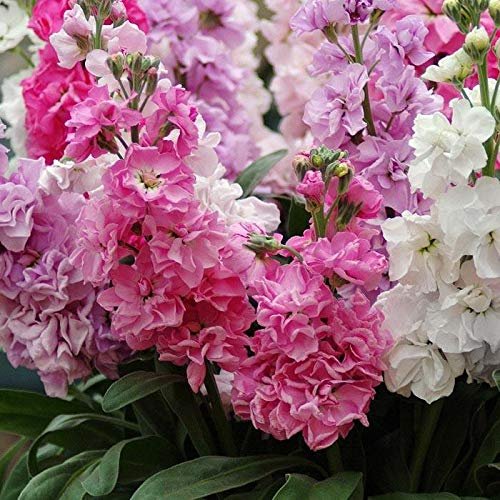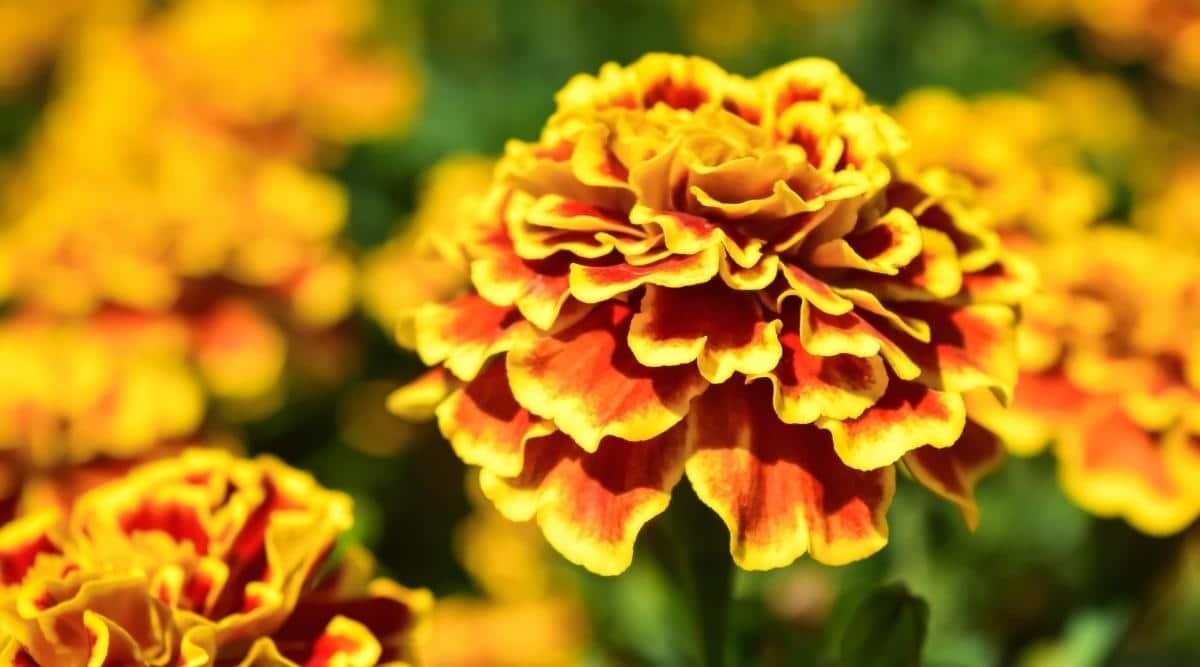Stock Flower Facts, Uses, Cultivation, Botany, Historical Significance
 Stock Flower Facts
Stock Flower FactsStock Flower Facts | Description | Distribution and Habitat | Botany and evolution | Cultivation | Uses | Cultural | Interesting facts | frequently asked questions about Stock
Welcome to the world of Flower Stock, also known as Matthiola incana! This delightful flowering plant is a favorite among gardeners and florists alike, thanks to its stunning blooms and sweet fragrance. The Flower Stock is a member of the mustard family, and it boasts tall, slender stems that can reach up to three feet in height. Its colorful, aromatic flowers come in shades of pink, purple, white, and more, making it a versatile choice for a variety of garden settings. Whether you’re looking to add a pop of color to your backyard or create a stunning centerpiece for your next event, the Flower Stock is sure to impress. So why wait? Let’s explore the beauty and allure of this remarkable plant together!
Taxonomy of Stock
| Kingdom | Plantae |
|---|---|
| Clade | Tracheophytes |
| Clade | Angiosperms |
| Clade | Eudicots |
| Clade | Rosids |
| Order | Brassicales |
| Family | Brassicaceae |
| Genus | Matthiola |
| Species | Matthiola incana |
Morphology of Stock
| Morphological Feature | Description |
|---|---|
| Stem | Erect, slender, and branched |
| Leaves | Oblong or lanceolate, hairy, and alternate |
| Flowers | Four-petaled and arranged in racemes |
| Petals | Oval-shaped, with a clawed base and a rounded tip |
| Sepals | Four in number, green and hairy |
| Stamens | Six in number, tetradynamous |
| Ovary | Superior and two-celled |
| Fruit | Elongated siliques |
| Seeds | Small, flattened, and brownish in color |

Description of Stock
The Flower Stock, scientifically known as Matthiola incana, is a popular ornamental plant that belongs to the Brassicaceae family. It is native to the Mediterranean region, but it is widely cultivated in various parts of the world for its beautiful and fragrant blooms.
The Flower Stock typically grows to a height of about 60-90 cm and has an erect, slender, and branched stem. The leaves are oblong or lanceolate in shape, hairy, and alternate along the stem. The flowers are arranged in racemes and have four petals that are oval-shaped, with a clawed base and a rounded tip. The petals come in a range of colors, including pink, purple, white, and red. The sepals are green and hairy, and there are four of them.
The stamens of the Flower Stock are six in number and are tetradynamous, which means they are arranged in two sets of four. The ovary is superior and two-celled, and the fruit is an elongated silique. The seeds are small, flattened, and brownish in color.
The Flower Stock is widely used in gardens and as cut flowers in the florist industry. It is known for its sweet fragrance, which makes it a popular choice for perfumes and essential oils. The plant is also used in traditional medicine for its anti-inflammatory and analgesic properties.
In conclusion, the Flower Stock is a beautiful and versatile plant that is highly prized for its ornamental value and medicinal properties. Its stunning blooms, sweet fragrance, and easy cultivation make it a popular choice among gardeners and flower enthusiasts.
Distribution and habitat of Stock
The Flower Stock, or Matthiola incana, is a flowering plant that is native to the Mediterranean region, but it is now widely cultivated in other parts of the world as well. In its native range, the Flower Stock is found growing in rocky areas, hillsides, and along the edges of forests.
The plant has been introduced to other parts of the world, including North America, where it has become naturalized in some areas. It is commonly grown as an ornamental plant in gardens and parks, and it is also cultivated for use in the cut flower industry.
The Flower Stock thrives in well-drained soil that is rich in organic matter, and it prefers full sun to partial shade. It can tolerate a range of temperatures, but it is not very frost hardy.
The plant is tolerant of dry conditions and can survive periods of drought, but it also requires regular watering to maintain healthy growth and flowering. In its native range, the Flower Stock is often found growing in rocky, well-drained soil in coastal areas.
Overall, the Flower Stock is a hardy and adaptable plant that can thrive in a variety of habitats and conditions. Its versatility and easy cultivation make it a popular choice for both gardeners and commercial growers.
Botany and evolution of Stock
The Flower Stock, or Matthiola incana, is a member of the Brassicaceae family, which is one of the largest families of flowering plants. This family includes a wide range of plants, including many important food crops such as broccoli, cabbage, and mustard.
The Flower Stock is an herbaceous annual or perennial plant that typically grows to a height of 60-90 cm. It has an erect, slender stem that is branched and hairy, with oblong or lanceolate leaves that are also hairy.
The flowers of the Flower Stock are four-petaled and arranged in racemes. The petals are oval-shaped, with a clawed base and a rounded tip, and they come in a range of colors, including pink, purple, white, and red. The sepals are green and hairy, and there are four of them. The stamens are six in number and are tetradynamous, which means they are arranged in two sets of four.
The Flower Stock is believed to have originated in the Mediterranean region, where it has been cultivated for centuries for its ornamental and medicinal properties. The plant has been selectively bred over time to enhance its desirable traits, such as its colorful and fragrant blooms.
The evolution of the Brassicaceae family is believed to have occurred over millions of years, with many of its members developing unique adaptations to survive in a variety of habitats and conditions. The family is known for its diverse range of plants, which includes both annual and perennial species, as well as herbs, shrubs, and trees.
Overall, the Flower Stock is a fascinating and beautiful plant that is part of a larger family of important food crops and ornamental plants. Its evolution and adaptations have allowed it to thrive in a variety of habitats and conditions, making it a valuable addition to any garden or landscape.
Cultivation of Stock
The Flower Stock, or Matthiola incana, is a popular and easy-to-grow flowering plant that can be cultivated in a variety of settings, from gardens and parks to commercial flower fields. Here are some tips for successfully cultivating Flower Stock:
- Site selection: Choose a site that receives full sun to partial shade, and has well-drained soil that is rich in organic matter. The plant prefers a slightly acidic soil pH of around 6.0 to 7.0.
- Planting: Flower Stock can be grown from seeds or seedlings. If starting from seeds, sow them directly in the garden bed in early spring or fall. Plant seedlings in the garden after the danger of frost has passed. Space plants 12 to 18 inches apart.
- Watering: Flower Stock requires regular watering, especially during periods of drought. However, be careful not to overwater, as this can lead to root rot.
- Fertilization: Apply a balanced, all-purpose fertilizer once a month during the growing season.
- Mulching: Mulching around the base of the plant can help retain moisture in the soil and prevent weed growth.
- Pruning: Deadheading spent flowers can encourage the plant to produce more blooms. Cut back the entire plant by one-third after the first bloom to encourage a second flush of flowers.
- Pests and diseases: Flower Stock is generally pest and disease-resistant, but watch out for aphids, caterpillars, and powdery mildew.
In conclusion, the Flower Stock is a beautiful and versatile plant that is easy to grow and care for. With the right site selection, planting, watering, fertilization, and pruning, you can enjoy a bountiful display of colorful and fragrant blooms throughout the growing season.
Uses of Stock
The Flower Stock, or Matthiola incana, has a number of uses, both practical and aesthetic. Here are some of the most common uses of this versatile plant:
- Ornamental: The Flower Stock is widely cultivated as an ornamental plant in gardens, parks, and as a cut flower. Its colorful and fragrant blooms are particularly valued in floral arrangements.
- Medicinal: The Flower Stock has been used in traditional medicine for its anti-inflammatory, analgesic, and sedative properties. It is believed to be useful in treating respiratory ailments, such as bronchitis and asthma.
- Culinary: The young leaves and shoots of the Flower Stock are edible and can be used as a salad green or cooked like spinach.
- Fragrance: The Flower Stock is widely used in the perfume industry for its sweet and spicy fragrance. The plant contains a high concentration of essential oils, which are extracted for use in fragrances, cosmetics, and soaps.
- Insect repellent: The Flower Stock contains natural insect-repelling compounds, and it has been used to repel moths and other insects from clothing and bedding.
- Symbolism: The Flower Stock is associated with love, passion, and endurance. It is often used in wedding bouquets and floral arrangements, and it is said to symbolize the enduring nature of love.
Overall, the Flower Stock is a versatile plant that has a number of practical and aesthetic uses. Its beauty, fragrance, and medicinal properties make it a valuable addition to any garden or landscape.
Cultural and Historical Significance of Stock
The Flower Stock, or Matthiola incana, has a rich cultural and historical significance in various parts of the world. Here are some of the notable cultural and historical aspects of this flower:
- Middle East: The Flower Stock is known as “Ghazal” in Arabic and has been cultivated in the region for centuries. It is particularly valued for its fragrance, and the essential oil extracted from the plant is used in perfumes and cosmetics.
- Europe: The Flower Stock was first introduced to Europe in the 16th century and quickly became popular among gardeners and florists. The plant’s vibrant colors and spicy fragrance made it a sought-after ornamental plant, and it became a symbol of love and fidelity.
- Japan: In Japan, the Flower Stock is known as “Asagao” and is traditionally grown for its blue flowers. The plant is associated with the famous Japanese folktale “The Tale of the Bamboo Cutter,” in which a princess is born from a stalk of bamboo.
- China: The Flower Stock is known as “Xiang Bao Ju” in China and has been cultivated for over 2,000 years. It is particularly associated with the city of Hangzhou, where it is grown and used in traditional medicine and cooking.
- Cultural Symbolism: The Flower Stock is often associated with love, fidelity, and endurance. It is frequently used in weddings, where it symbolizes the enduring nature of love. The flower is also associated with the birth month of November and is used as a birth flower for those born during this month.
Overall, the Flower Stock has played an important role in the cultural and historical traditions of various regions of the world. Its beauty, fragrance, and symbolism have made it a beloved and treasured flower for centuries.
Explanatory Notes for Stock
Explanatory notes for the Flower Stock, or Matthiola incana, provide additional information and context about the flower. Here are some explanatory notes about this plant:
- Scientific classification: The Flower Stock belongs to the family Brassicaceae, which includes other popular plants such as broccoli, cabbage, and mustard. The plant’s scientific name is Matthiola incana.
- Cultivar varieties: The Flower Stock is available in many cultivar varieties that vary in color, size, and fragrance. Some popular cultivars include ‘Alba’, which has pure white flowers, and ‘Rosetta’, which has deep pink flowers.
- Growing conditions: The Flower Stock is a hardy plant that grows well in a variety of growing conditions. It prefers well-draining soil and full sun but can tolerate partial shade. The plant is often grown as an annual, but it can also be grown as a biennial or perennial in some regions.
- Propagation: The Flower Stock can be propagated from seeds or cuttings. The seeds should be sown in early spring or fall, and the cuttings should be taken in summer.
- Pest and disease control: The Flower Stock is susceptible to a few common pests and diseases, such as aphids and powdery mildew. These can be controlled with natural remedies, such as neem oil or a baking soda solution.
- Ethnobotanical uses: The Flower Stock has been used in traditional medicine and cooking in various parts of the world. Its leaves and shoots are edible and can be used in salads or cooked like spinach. The plant’s essential oil is used in perfumes, cosmetics, and soaps.
Overall, explanatory notes provide a more detailed understanding of the Flower Stock, its growing conditions, propagation, and uses. These notes can be helpful to gardeners, botanists, and enthusiasts who want to learn more about this plant.
Interesting facts about Stock
Here are 10 interesting facts about the Flower Stock, or Matthiola incana:
- The Flower Stock is native to the Mediterranean region and has been cultivated for thousands of years.
- The plant is named after Pietro Andrea Matthioli, an Italian physician and botanist who lived in the 16th century.
- The Flower Stock is also known as “Night-scented Stock” because its fragrance is strongest in the evening.
- The Flower Stock is a popular flower in cut flower arrangements due to its vibrant colors and long vase life.
- The plant is also used in perfumes, soaps, and other fragrances because of its strong, spicy scent.
- The Flower Stock is a popular plant for attracting pollinators, such as bees and butterflies, to the garden.
- The plant is often grown as an annual, but it can also be grown as a biennial or perennial in some regions.
- Some cultivars of the Flower Stock can grow up to 3 feet tall, while others stay compact and grow only 6-8 inches tall.
- The plant’s essential oil is used in aromatherapy and is believed to have relaxing and calming properties.
- The Flower Stock has been used in traditional medicine to treat various ailments, including respiratory problems and digestive issues.
General queries or frequently asked questions about Stock
What is the Flower Stock?
The Flower Stock, or Matthiola incana, is a popular garden plant that produces fragrant, colorful flowers.
What colors do Flower Stocks come in?
Flower Stocks come in a wide range of colors, including white, pink, purple, red, and yellow.
What is the best time to plant Flower Stocks?
The best time to plant Flower Stocks is in early spring or fall when temperatures are mild.
How do you care for Flower Stocks?
Flower Stocks require full sun and well-draining soil. They should be watered regularly and fertilized every few weeks.
What is the height of Flower Stocks?
Flower Stocks can vary in height depending on the cultivar, but they typically grow between 6-36 inches tall.
Can Flower Stocks be grown in containers?
Yes, Flower Stocks can be grown in containers as long as the container has good drainage and the plant receives enough sunlight.
Do Flower Stocks attract pollinators?
Yes, Flower Stocks are known to attract pollinators such as bees and butterflies to the garden.
What is the lifespan of Flower Stocks?
Flower Stocks are typically grown as annuals, but they can also be grown as biennials or perennials in some regions.
Can you eat Flower Stocks?
Yes, Flower Stocks are edible and their leaves and shoots can be used in salads or cooked like spinach.
What is the cultural significance of the Flower Stock?
The Flower Stock has been used in traditional medicine and cooking in various parts of the world, and its essential oil is used in perfumes, cosmetics, and soaps. It is also a popular flower for cut flower arrangements and garden displays.
Conclusion
In conclusion, the Flower Stock, or Matthiola incana, is a versatile and beloved garden plant with a rich history and many interesting characteristics. Its vibrant colors and strong fragrance make it a popular choice for cut flower arrangements, while its essential oil is used in perfumes, cosmetics, and aromatherapy. The plant is also used in traditional medicine and cooking in various parts of the world. The Flower Stock is easy to care for and can be grown in containers or in the ground, making it a great choice for both novice and experienced gardeners. Its ability to attract pollinators and its edible leaves and shoots also make it a valuable addition to any garden. Overall, the Flower Stock is a fascinating and beautiful plant that has captured the hearts of gardeners and enthusiasts around the world.












